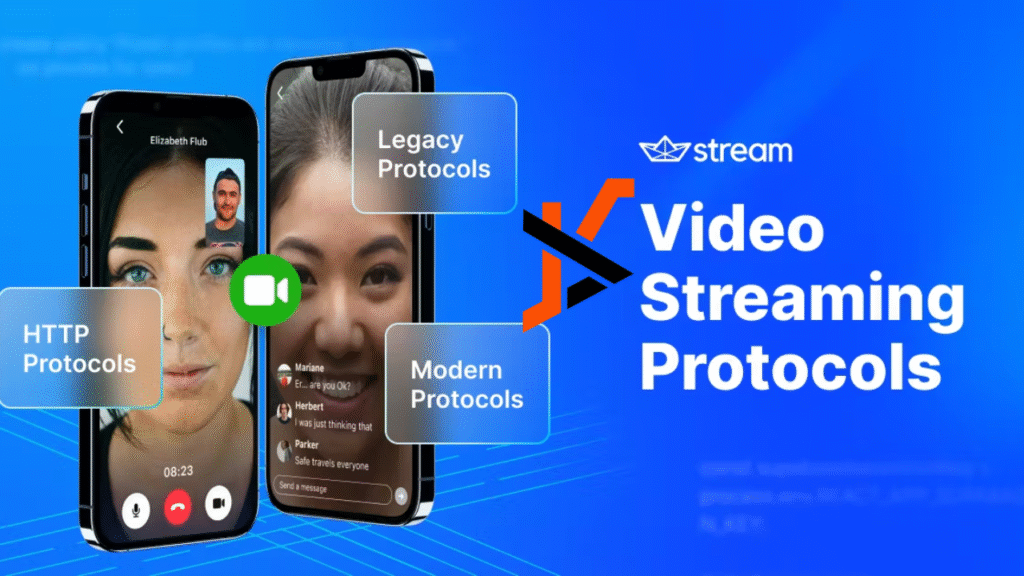In an era where virtual events, webinars, online classes, and real-time video content have become the norm, the importance of a reliable live broadcast service cannot be overstated. But behind every smooth live stream is a carefully selected set of video protocols – the rules and technologies that govern how your video data travels from source to viewer.
Whether you’re a content creator, educator, or business running regular broadcasts, understanding the link between live broadcast platforms and video protocols is essential to delivering a flawless experience.
What Is a Live Broadcast Service?
A live broadcast service enables you to stream video content in real time to viewers over the internet. It’s commonly used for events like:
- Online classes and virtual classrooms
- Webinars and panel discussions
- Religious or community events
- Product launches and corporate presentations
- Live sports or entertainment streams
A robust live broadcast platform handles everything from video ingestion and encoding to CDN distribution, adaptive bitrate streaming, and audience engagement tools like chat, Q&A, or polls.
Some services are end-to-end platforms, while others allow integration with your own website or LMS, offering flexibility based on use case.
Why Video Protocols Matter in Live Broadcasting
A video protocol is a set of rules that determines how video data is packaged, transmitted, and played. In live broadcasting, these protocols are critical because they affect:
- Stream quality and latency
- Viewer compatibility across devices and browsers
- Streaming resilience on unstable networks
- Encryption and content protection
Choosing the right protocol ensures your stream is fast, reliable, and secure, especially when dealing with large or international audiences.
Common Video Protocols Used in Live Broadcast Services
1. RTMP (Real-Time Messaging Protocol)
RTMP is one of the most popular protocols for ingesting live video streams from broadcasting software like OBS. It offers low latency and is widely supported by encoders.
Use case: Getting your live stream from a source (e.g., OBS) into your live broadcast service.
Limitations: RTMP is not typically used for playback on modern devices, as it’s not supported natively by most mobile browsers.
2. HLS (HTTP Live Streaming)
Developed by Apple, HLS is the most commonly used protocol for delivering live and on-demand video to viewers. It supports adaptive bitrate streaming, which ensures smooth playback even on variable internet connections.
Use case: Ideal for reaching audiences on all modern devices.
Trade-off: Slightly higher latency (10–30 seconds), although this is improving with low-latency HLS versions.
3. DASH (Dynamic Adaptive Streaming over HTTP)
An alternative to HLS, DASH offers similar adaptive streaming benefits and is codec-agnostic. It’s often used in enterprise-grade applications or on Android-heavy user bases.
Use case: Suitable for large-scale broadcasts across a wide device ecosystem.
Trade-off: Slightly less support on older Apple devices compared to HLS.
4. SRT (Secure Reliable Transport)
SRT is a newer protocol designed for low-latency, high-quality video transport, particularly for unstable networks. It’s often used in contribution workflows (from encoder to server).
Use case: Broadcasting from remote or unpredictable environments.
Advantage: Secure transmission with encryption and minimal packet loss.
Matching Broadcast Services With the Right Protocols
A professional live broadcast service should support multiple protocols – RTMP for ingest, HLS/DASH for delivery, and ideally SRT for more resilient remote contribution. This ensures:
- High-quality video reaches every device
- Secure delivery via encryption and token-based access
- Adaptive playback even in low-bandwidth regions
- Scalability as viewership grows
Some secure platforms (like VdoCipher) go a step further by combining live streaming infrastructure with playback protection, watermarking, and DRM options – especially valuable for events that are monetized or contain confidential content.
When Security Matters: Protocols & Protection
Not all live streams are meant for the public. In education, enterprise, or premium event broadcasting, security is key. Protocols like HLS and DASH can be combined with token authentication and encrypted delivery to restrict access.
If you need DRM or piracy protection, the live broadcast service should integrate with secure playback workflows – either via license control or viewer-level watermarking – even while using standard protocols for compatibility.
Whether you’re hosting a training session, launching a product, or teaching a global classroom, your success depends on the reliability of your live broadcast service and the strength of the video protocols it uses.
Choosing the right mix ensures that your stream not only reaches your audience but also delivers excellent quality, adapts to network conditions, and stays protected from unauthorized use.

